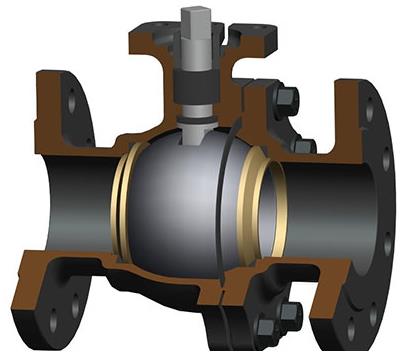The ball valve evolved from the plug valve. It can just rotate 90 degrees. It can be opened and closed with very little torque. The body cavity of the ball valves is straight. The flow resistance of the medium is close to 0. The structure of ball valves is also relatively simple. It is composed of the valve body, ball, seat, stem, bracket and driving device.
The structure picture of the ball valve

1. The floating ball valve: The ball is floating. The ball can produce a certain displacement and pressure on the surface of the outlet sealing to ensure the outlet sealing under the action of medium pressure. This type of ball valve is widely used in medium and low pressure pipelines.
2. The fixed ball valve: The ball is fixed and it does not move after compression. Usually, it is equipped with bearings on the upper and lower shaft of the ball. The operation torque is small. It is suitable for high pressure and large diameter valves.
3. The elastic ball valve: The ball is elastic. The ball and seat sealing rings are made of metal materials. The sealing pressure is very large, relying on the medium itself. The pressure has not reached the requirements of sealing. It must apply external force. This kind of valves is suitable for high temperature and high pressure media.
What are the characteristics of the ball valve?
1. It has the lowest flow resistance (actually 0).
2. It will not get stuck when working. It can be used in corrosive media and low boiling point liquid.
3. Complete sealing can be achieved in a wide range of pressure and temperature.
4. It can realize fast opening and closing. When the valve is opened and closed fast, the operation has no impact.
5. When fully opened and fully closed, the sealing surface of the ball and the seat is isolated from the medium, which will not cause erosion of the sealing surface.
Here we introduce the structure and characteristics of ball valves for you so much. If you want to know more knowledge about ball valves, you can continue to follow us - Topper Valve.
